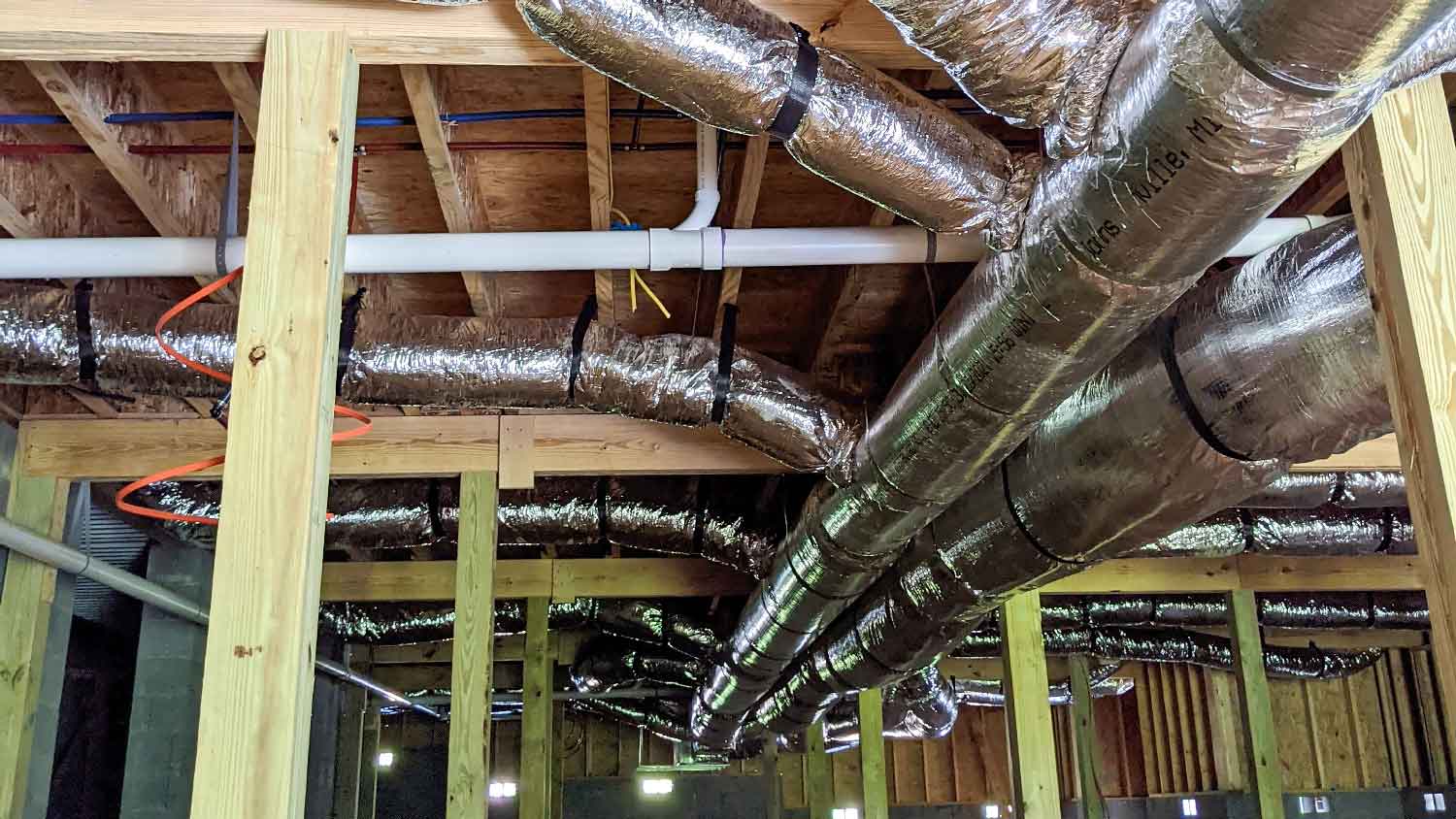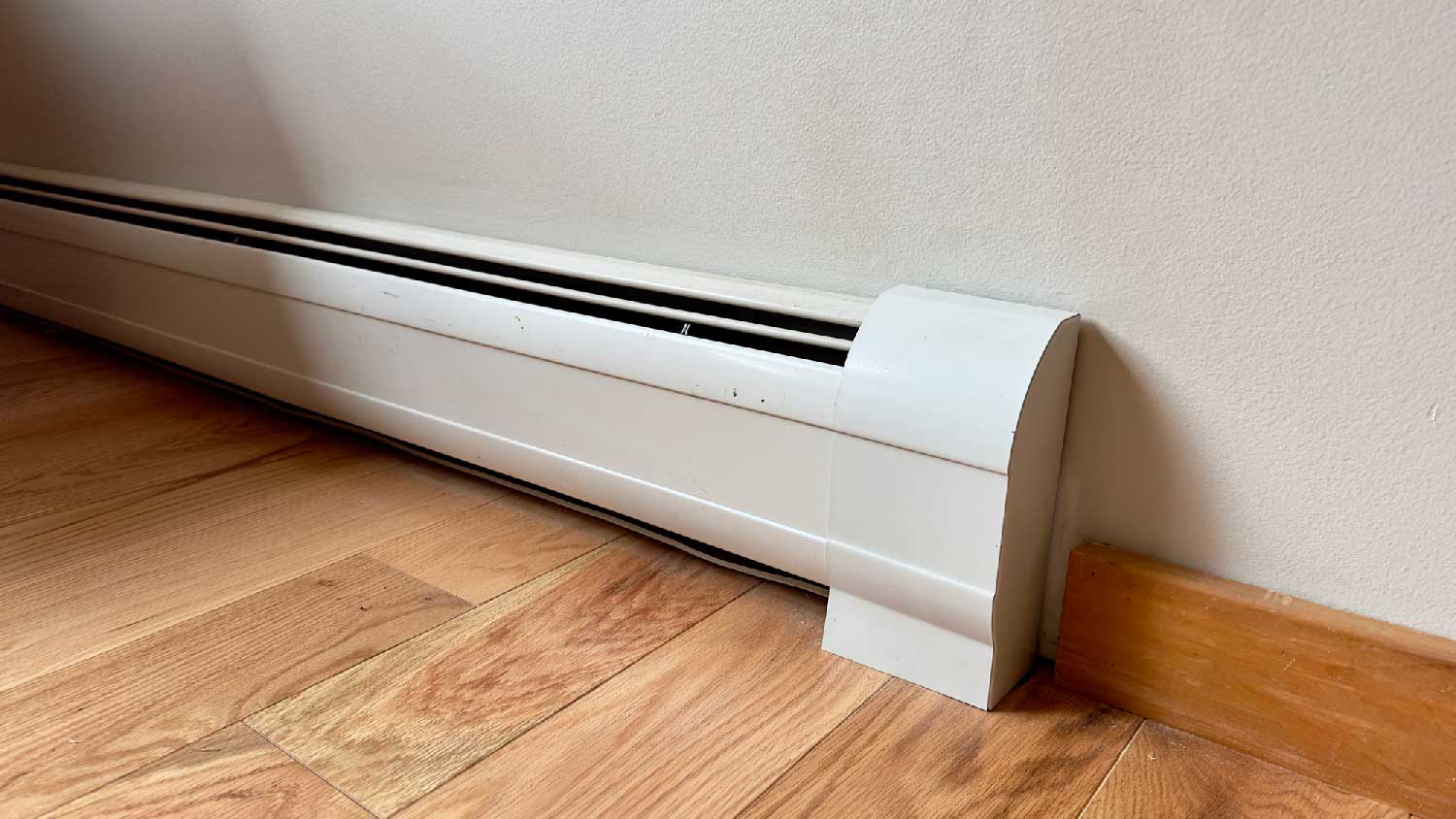
Whole-house humidifier costs vary based on the type and size of the unit, along with other factors. The price might be worth it for people living in dry regions.
Don’t let a malfunctioning thermostat send your temperature through the roof


The average cost to replace a broken thermostat is approximately $185, but it can range from $115 to $265.
If the HVAC system requires repair, you can expect to pay at least $350, depending on the specific type of repair.
Dirt buildup can cause the thermostat to malfunction, and a simple cleaning may fix the issue.
Scheduling an annual HVAC inspection can prevent issues with your thermostat and HVAC system.
There’s nothing nicer than returning to a cozy home on a cold winter’s night, but sometimes things go wrong with your system. If you’ve set your heating to turn on an hour before you're due back from work and you walk into a polar parlor, don’t panic. Here’s how to troubleshoot a thermostat that’s not working and find out if a simple and inexpensive DIY fix can keep things comfy.
Thermostats are pretty sophisticated devices, but they aren’t foolproof. Sometimes, you can easily recognize the signs you have a bad thermostat. Other times, you or a professional might need to investigate if another part of your HVAC system is malfunctioning. Common signs of a thermostat problem include:
Blank thermostat screen
Thermostat not switching on
HVAC system not reaching programmed temperature
HVAC system continuously running or not running a programmed cycle
Not being able to change thermostat settings
Thermostat continuously resetting
If you think your device isn’t working properly, it pays to learn how to troubleshoot a thermostat. Before calling out the professionals, try the following DIY strategies to get your HVAC system back on task.
The first thing to do is check your thermostat has power. A blank screen could signify you need to replace the batteries. If the batteries lose power or suffer from corrosion, the screen might flicker or fade. Change the batteries in your thermostat and reset the device.
Wired devices can be a little more troublesome. An unexpected power surge can trip the circuit breaker to which the thermostat is attached. Locate the associated breaker in your home’s electrical panel box and reset it by flipping it off and on again.
If the breaker continues to trip, there could be a bigger problem with your electrical wiring. At this stage, it’s best to seek help from a licensed electrician near you. You could have an overloaded or bad circuit breaker.
Sometimes, you might be stressing about the cost of replacing an HVAC system when all you need to do is learn how to read your thermostat properly and check the program settings. If your system is blowing out hot rather than cold air, someone could have accidentally flipped the mode from the AC to the heat setting. And if your heating switches at odd hours during the night, it could be on a manual 24-hour setting rather than your programmed auto mode.
Always check your settings after a prolonged power outage, as they may reset to the manufacturing standard or manual mode.
Include your thermostat in your spring cleaning checklist. A buildup of dirt can result in the device misreading temperatures because of sensor issues or compromised electrical parts. Here’s how to clean your thermostat:
Shut off the power at the circuit breaker or turn off a battery-operated device.
If the thermostat has a cover, flip it open (some modern, smart thermostats won’t have a cover).
Gently clean away dirt particles using a soft bristle brush or compressed air and a dry microfiber cloth. Never use a wet cloth around the delicate electrical parts.
Replace the cover and turn the power back on.
According to the U.S. Department of Energy, to operate properly, you should position your thermostat on an interior wall away from direct sunlight, drafts, doorways, skylights, and windows. Sticking it behind a big sideboard can also block air movement, and having it right next to a hot oven is a no-no.
If the fitter doesn’t install the thermostat well, this can also cause problems. A device that isn’t sitting level can produce inaccurate readings, especially if you have a mercury thermostat with this chemical sitting in a bulb.
If the location affects your thermostat's performance, you might need to move it. Sometimes, this will involve rerouting wiring, and you’ll need to hire an electrician.
Loose or corroding wires can affect your thermostat’s performance and be a safety hazard. Here’s how to inspect the wiring:
Turn off the thermostat power at the circuit breaker box. Never remove the cover to expose electrical wiring without completing this step.
Consult the user manual for instructions for accessing and understanding the wiring for your thermostat model.
Remove the device cover and inspect the wiring for corrosion or loose connections.
If you see a problem, only remove the corroded section using a wire stripper, tighten loose screws, or connect detached wires if you are confident in handling electrical connections safely.
If you have any concerns, contact an electrician to repair the wiring rather than attempting to DIY.

No matter what model you opt for, thermostats won’t last forever. But you can take some simple steps to keep your thermostat thriving for as long as possible.
Replace batteries when they run low.
Keep the device cover securely in place to prevent premature buildup of dirt.
Clean dirt and debris buildup regularly.
Avoid positioning in a room with high humidity. This can quickly result in corrosion of parts.
Update software on smart thermostats.
Reprogram if your HVAC system switches on and off more frequently than needed. The more your system has to work, the shorter its life span will be—and it can result in higher energy bills.
Complete an annual HVAC inspection, which includes a thermostat check. The professionals can replace loose wiring or wonky sensors, remove corrosion, and advise on placement.
Most of the tasks above are easy to DIY. However, if you’ve been through these troubleshooting steps and nothing is working or are concerned about wiring problems, call a professional thermostat repair service near you for an inspection. Your thermostat or something else in your HVAC system may need a tune-up or replacement parts.
You don’t always need an electrician to replace a thermostat. If it is a battery-operated device or one that can hook up to your existing wiring, you could make savings by replacing the thermostat yourself. When you aren’t confident working with wiring, or it needs rerouting, call a professional—mucking up installation can cause blown fuses, tripped circuits, and performance issues.
The average cost to install a new thermostat is $180. The average HVAC repair cost is $350, but repairs to the thermostat, like replacing the sensor, will be significantly less.
From average costs to expert advice, get all the answers you need to get your job done.

Whole-house humidifier costs vary based on the type and size of the unit, along with other factors. The price might be worth it for people living in dry regions.

Springing for HVAC maintenance costs may seem like an extra—and easy-to-ignore—item on your checklist, but it will save you money in the long run.

Discover the cost to install ductwork. Learn about average prices, cost factors, and tips to save money on your ductwork installation project.

Even when you're sweating up a storm on a hot day, your AC should keep its cool. Here's what to do when condensation on your AC signals larger problems.
How to clean your air conditioner depends on the unit type. Sometimes, a good hose-down is all you need if you have centralized AC. This guide can help with the cleaning process.

Discover the average wall heater installation cost, key price factors, and expert tips to help you budget and save on your next home heating project.